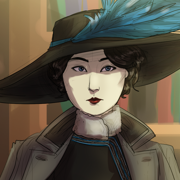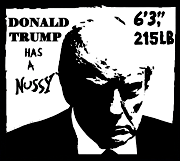|
Is Gierjihaei a real attested name or did Paradox invent Jurchen names out of the blue? I mean I google it but I get nothing. Just curious about Jurchens. Negostrike fucked around with this message at 23:08 on Jul 24, 2019 |
|
|
|

|
| # ? Jun 4, 2024 00:50 |
|
What are the Reformed Ideas for the Aztec Religion anyhow?
|
|
|
|
Negrostrike posted:Is Gierjihaei a real attested name or did Paradox invent Jurchen names out of the blue? I haven't found anything about that name either. I know some of the names for Jurchens are seen in historical figures. I saw an Aguda and a Wulu, for example. I looked up Hezhenbao, from Gyalyum's time, and that was a real name, the son of a major chieftain, Wugunai. But I'm not sure if all the names in the files are real. Luhood posted:What are the Reformed Ideas for the Aztec Religion anyhow? Warmongering, Invaders (the unique Aztec doctrine, basically Bloodthirsty Gods + Seabound + Unrelenting), Daring, Temporal habeasdorkus posted:
As I'm sure everyone knows by now, the dead are never really dead. Kangxi fucked around with this message at 04:40 on Jul 25, 2019 |
|
|
|
I don't know I'm reading that Elder King's LP and it turns out the dead can actually be dead
|
|
|
|
Relating to the aztec reformation: Having temporal leadership is very much in line with how the Aztec empire was run: however calling it's leader a Tlatoani is incorrect. Tlatoani means king, the leader of a single city state. The proper leader of the aztec empire is a Huetlatoani, or a paramount king: a king among kings or an emperor. It's also worth noting that they had important ritual properties but were not, in and of themselves, a high priest of any kind. As well, the empire was technically Diarchial, with the Huetlatoani being responsible for the external affairs, but the actual management of Tenochtitlan, the only true part of the empire, being the responsibility of the Cihuacoatl, who was seen as the "female" to the Huetlatoani's "male." It's also worth noting that the idea of a holy order called the Cult of Huītzilōpōchtli is somewhat nonsensical. Huītzilōpōchtli was actually a rather provincial deity in that he was exclusively the deity of the city of Tenochtitlan. While he was the "main deity" of the aztec empire in that he was the patron of the Mexica people, he was considered an equal of Tlaloc, the rain, to them. This was actually despite the efforts of the architect of the triple alliance, Tlacaelel, who elevated him to displace the old solar deity and actually tried to make an empire instead of a network of tributaries. Outside of the Mexica he wasn't really worshiped as far as I can tell. But more importantly: the Aztecs already had religious orders of warriors. Anywhere between four and two of them, in fact. In order of prestige they were: the shorn ones, the otomie, the eagle warriors and the jaguar warriors. Sadly, we don't know if the former two were dedicated to any god (with the otomie actually seeming to be named after and possibly comprised of a mercenary ethnicity that was absorbed into the Mexica), but the latter two were definitely dedicated to Nanahuatzin and Tecuciztecatl respectively. Religion was already heavily integrated into their warfare besides this, so the idea of a holy order arising in an army that is basically a group of holy orders anyway is sort of hard to picture.
|
|
|
|
I think it's interesting that a literal translation of "Tlatoani" is "speaker," which is also basically what "dictator" means.
|
|
|
|
It is not particularly difficult for me to imagine that the Cult of Huītzilōpōchtli could become a warrior society of Tenochtitlan, given the importance of the god within Aztec society. In fact, it being a god so closely aligned with Tenochtitlan specifically makes it even more likely to become an organ of the state, no? Like, a Cult of Tlaloc would be just as dumb because Tlaloc wasn't really a war God and Huītzilōpōchtli very much is.
|
|
|
|
Sampatrick posted:It is not particularly difficult for me to imagine that the Cult of Huītzilōpōchtli could become a warrior society of Tenochtitlan, given the importance of the god within Aztec society. In fact, it being a god so closely aligned with Tenochtitlan specifically makes it even more likely to become an organ of the state, no? Like, a Cult of Tlaloc would be just as dumb because Tlaloc wasn't really a war God and Huītzilōpōchtli very much is. That's not really the problem. The problem is that the aztec warrior societies are already an arm of the state intimately connected with the leadership, while also being of extreme religious importance.
|
|
|
|
Easy: they're a double-holy order.
|
|
|
|
It could also be understood as a result of adapting to the new European context and the crusading mentality, and possibly even be fueled by European converts to the Aztec faith.
|
|
|
|
NewMars posted:That's not really the problem. The problem is that the aztec warrior societies are already an arm of the state intimately connected with the leadership, while also being of extreme religious importance. Yes, so in the context of a reformation of Aztec religion, it would make sense for there to be a variety of changes and I'd imagine that the formation or dissolution of warrior societies would be one of the first places where change is made. Like, if you imagine the reformation as being a centralization of religious authority around a specifically Aztec state, then it would make sense to at the same time try to make other aspects of the state also specifically Aztec.
|
|
|
|
Sampatrick posted:Yes, so in the context of a reformation of Aztec religion, it would make sense for there to be a variety of changes and I'd imagine that the formation or dissolution of warrior societies would be one of the first places where change is made. Like, if you imagine the reformation as being a centralization of religious authority around a specifically Aztec state, then it would make sense to at the same time try to make other aspects of the state also specifically Aztec. The problem is that these societies were already specifically aztec: the most prestigious ones were headquartered and lived in the same palace as the Hueytlolanti. Like, they're already pre-centralized around the authority of the aztec state there. Although this is all pretty bunk considering the existing absurdity of... everything to do with SI.
|
|
|
|
I can't believe that paradox of all companies would half rear end on history
|
|
|
|
Rody One Half posted:I can't believe that paradox of all companies would half rear end on history It's enough to rip away your ability to feel human.
|
|
|
|
Eurocentrism is a harsh mistress on occasion, I'm sad to say.
|
|
|
|
NewMars posted:It's enough to rip away your ability to feel human. That's the best sperg.txt ever
|
|
|
|
I will absolutely be following this, as a rabid historian and CK2 player. I've recently been reading Deng Xiaoping's biography, but I'll have to reserve time to read through my e-library books on Tibet and Bon.
|
|
|
|
berryjon posted:Eurocentrism is a harsh mistress on occasion, I'm sad to say. Unfortunately yes. From what I know, I can expect things like courtesy names and reign names to get confused (to be fair I get them confused constantly), but I've seen some little mistakes like Dugu Xin being listed as a Han ruler. But from the Chinese language forums I've browsed a while ago, most players were just happy China is there in some form, and they really seemed to like the Water Margin references. Grouchio posted:I will absolutely be following this, as a rabid historian and CK2 player. Pantsov or Vogel?
|
|
|
|
Kangxi posted:Unfortunately yes. From what I know, I can expect things like courtesy names and reign names to get confused (to be fair I get them confused constantly), but I've seen some little mistakes like Dugu Xin being listed as a Han ruler.
|
|
|
|
Chapter 20: 1026 to 1036 - Tsenmo Purgyal Dagmo 'the Hammer' Transcript of a lecture delivered by Dr. Dimitris Bagdzevičius, a professor of military history at the Queen Dobrava Military Academy in Orsha. This is the fourth in his series on central Asian history. Good evening class. I've looked over your introductory papers. [...] Well, I'll leave it at that. We'll discuss my standards for turning in revised essays later - you can earn a lot of points by turning in a better version of your essay. I'm a harsh grader, but I don't want anyone to fail. But I'll get to that after the lecture is completed. In this lecture, we will discuss the second Mongolian invasion of Tibet. This was in 1021 CE, around the time of the Great Western Invasion of Burgundy. The ruler of Tibet at this time is an interesting figure. Dagmo 'the Hammer' has several primary and secondary sources written about her, and they're all interesting to go through. Physically she appears to have been in frail condition for much of her life, and really it's a miracle she lives for so long. I'm aware of the ongoing controversy about her personality tics, but I won't get into that here. I'm not qualified to discuss it. In any case, you'll note I've been going over these campaigns with more detail because the Tibetans kept good records. A major university expansion, ordered by the late Jurchen empress, was completed around this time, although the collection of scholarly texts had begun much earlier. The Memoirs of the Jurchen princess do not really cover it, and none of her subsequent physicians left any significant records. But I'm getting off track here. By the early 1020s, we know that she's recovering physically. She's attending more religious ceremonies. We do have bizarre rumors about her personal habits and grooming. She's not coughing up blood all the time anymore. This allows her to be more active in political life, and present more coherent policies. She may or may not be involved in aiding other exiles from the Mongolian campaigns to begin campaigns of reconquest. She is certainly more involved in military education and drawing up more targets for conscription. She leads an army to repel a small group of nomadic invaders - possibly refugees from the Mongols, possibly a Mongol raiding party. This first battle is held up in the later histories, showing her inspirational military leadership. I have heard in some sources, though I cannot confirm, that she led the nobility in a case of human sacrifice again. The Tibetans may have revived this practice in homage to Gyalyum the Benevolent. The Secret History of the Mongols notes this with confusion. They knew that a few servants and warriors should only give up their own lives voluntarily great khan dies. This wouldn't be the case for them as Temulun was still very much alive. So they were thinking - is the Tibetan ruler already dead? Or are they trying to kill our Khatun by some kind of proxy? They found all this very confusing, and a lot of ink has been used trying to figure out what the Tibetans were thinking. In late 1021, the Tanguts rose up again in the north. The Tibetan sources say this was an attempt to join the Mongolians. If this was the case, it wouldn't have worked out, because the Mongols killed traitors, even those who attempted to join them. There is a story about where Temulun was presented with an enemy khan, presented by two of his retainers who betrayed him. She kept that khan alive but had his servants killed. The rebels were soon defeated, just west of Qinghai Lake. Dagmo is outraged that there were rebels in the first place but calms down after their defeat is assured. At this time, the Tibetans may have heard that the Mongols were involved in a long and costly war with the Pechenegs, near the Ural mountains. They may assume that while the main body of the Mongolian army was occupied either fighting so far to the west or pacifying what was left of the later Han armies, they would have a few years to recover. They assumed incorrectly. The Mongols had already organized a provisional government, and had maintained control over much of the countryside. Under the command of a general Shirgugetu, they would amass an army of at least 40,000 troops - some Mongols, but mainly Han Chinese and even some Jurchens - and invade Tibet. The Mongols would invade Tibet not from the north or the west, but the east. Dagmo, the traditional histories say, did not even say anything when she heard the news. After a short time, where she fidgeted with her hands, she asked about the frontier garrison at Yumen. The cities of Yumen, Anxi, and the forts at the Kongtong mountains had already fallen within days. By the time the Tibetan army had assembled, the Mongol armies had already bypassed the low basin south of the old Jiuquan prefecture. The bulk of the Tibetan army did not go after the Han-Mongol army at Dulan, which was likely doomed anyway. Instead, they went to attack the rear of the Mongolian lines, near Delingha. The armies would meet just to the east of Delinghua, at the village of Xuji. The Tibetan Army at this battle was, according to both Tibetan and Mongolian records, larger than this part of the Mongolian army. It had even brought up some elephants from India. The Mongolian army was supplemented by Han Chinese troops, mostly conscripted from modern-day Sichuan or Gansu. The Tibetans won this first battle handily, but it was not over yet. While the bulk of the army hoped to recover Jiuquan and defeat the Mongolian rear guard, A separate part of the Tibetan army which had not yet caught up with the main force was overrun and almost completely destroyed at Golmud Both sides were able to claim a victory within days of each other. In both cases, where they were able to overwhelm and destroy a much smaller force. The Tibetans pursued the remnants of that army and defeated them again. We believe this battle to have taken place near the ruins of Shouchang. This was an easier victory for the Tibetans. Now here's the fun little story. The Tibetans capture a few noble prisoners. They find someone with a distinct appearance, of ashen skin, and speaking a language that none of them understood. They wrote down her name, and there's been a small academic debate over who she was and where she came from. Some other scholars said she might have been a Pecheneg or a Khazar. I've heard one scholar say, in all seriousness, that she was Italian. [waits for students' reaction]. I am not exaggerating. But if she was, it shows how far people were willing to travel, or how far someone could travel - even when the world was this far out of balance, and we're in the middle of the cataclysmic wars of the 11th century, easily one of the worst in human history up to that point. Now the Tibetan forces were in another problem. They had split up their forces to besiege some of the towns and fortresses which the Mongols had taken. One part of the army was at Yumen, and another, under the empress' personal command, was at Yangguan. The forces at Yangguan rushed back east to help them -- except -- they were harassed and slowed by the remnants of the rearguard army they had defeated twice before. So the Mongols had tried to prevent the two parts of the army from reuniting. While the main guard of the Tibetan army was able to shake off their pursuers, And so try and reunite their forces They would arrive too late to save much of that army. Still determined, the Tibetans press on and fight again at Yumen. Their advantage was that they were able to defeat an army already exhausted after a long battle with the previous army. Now it was the Mongol army that was split up, and the Tibetans caught between them. The Tibetans move south to defeat the weaker army first, but the Mongol forces were able to reunite. At this point, the Tibetans achieve another victory. Soon they recapture Yumen from the Mongol garrison. This was in 1035. What else happened that year? Yes, Mihailo. Correct. The year the Jihad to take Serbia starts. After the bulk of the expeditionary army is destroyed, then the Tibetans move to retake their captured cities. And so the second Mongol-Tibetan war ends with a victory for the Tibetans. Now we don't know as much about what we would now call the tactics of these battles. Some of the primary sources we have were written in the style of Chinese dynastic histories, which, at their worst, list only a place name and a date for each battle. But we can tell a lot from even these sources, or other contemporary commentaries. We know that the Mongols kept splitting up their armies against a numerically equal or inferior opponent. We can understand why they did this, because of the difficulty of the terrain. The Mongols themselves say that their problem was that they relied too heavily on conscripted forces and not enough Mongolian cavalry, which they felt to be more reliable. This may also contribute. In any case, we know that by now the tide was turning in their favor against the Pechenegs. And that their great Khatun had other plans in mind. Kangxi fucked around with this message at 14:03 on Jul 28, 2019 |
|
|
|
So do you get anything from defeating a
|
|
|
|
paragon1 posted:So do you get anything from defeating a A prestige and cash boost and they'll likely go after me again in ten years. Grouchio posted:Vogel. Just finished notes on chapter 8. Book kicks rear end. I really like the biography, but I'd heard that Vogel sometimes takes the CCP line on events. But there are very few people who can write on both China and Japan like he does and I'm happy to go back to reread his stuff. It'll be very hard to write something better until all the CCP archives are open.
|
|
|
|
Godspeed you! Mad khantun.
NewMars fucked around with this message at 02:47 on Jul 30, 2019 |
|
|
|
Chapter 21: 1036 to 1043 - Tsenmo Purgyal Dagmo 'the Hammer' The start of 1036 saw the conclusion of the Mongolian war with the Pechenegs. The latter had achieved a substantial victory - they had only lost a part of their territory after the first war, instead of being annexed outright. The empress Dagmo the Hammer continued her administration - cold, methodical, and upsetting to the nobility which had come to expect preferential treatment. She knows that the great hordes to her north are nowhere near exhaustion, and she knows if they invade again, Tibet's victory is not in any sense assured - the nomadic army is larger, more experienced, and has more skilled archers and cavalry than the Tibetan forces could counter. She hopes to build up Tibet's army, but she fears the worst and that they may have to give up space for time. The loss of further territory with the forlorn hope that some part of the empire may survive for another day. In recent years, the great Khatun Temulun of Mongolia had become prone to periods of distemper in the head and falling sickness. "Then that is who I shall follow," she said, and nothing more. And that is how the great Khatun abandoned the rites of the sky gods in favor of those of the Tibetans. The Tibetans, for some time, knew nothing of this. The vassal king in Kashmir concluded a successful war with the Samanids, claiming the mountainous lands of Badakhshan and Wakhan. The Tsenmo Dagmo hears rumors, which are fractals onto themselves. They know nothing on if they are true or false. While this was going on, the great Khatun proclaims the correctness of the Sacred Hierarchy and the rectification of doctrines published by the Tse the great. Still, Tibet is unaware of this. The cities grow, from new refugees and new crop fields to support them. The Mongols press further west. The Tsenmo Dagmo, still unwilling to do anything which she fears may provoke the Mongols, decides to move against the strategic trading post of Leh. The Samarajni Mahidevi is a capable ruler but also dealing with two wars at once. The Khatun sends a formal, yet not insulting letter asking that the Tsenmo address of a Tibetan noble who has behaved extremely rudely towards his eminent hosts - even going so far as to refuse their gifts. The Tsenmo, wanting to avoid war, has him disciplined harshly. As if there wasn't enough to deal with, the Buddhists rise up again. While the armies still assemble and march west to their destination, the Tsenmo hears even worse news - the Kingdom of Karnata, ruled by the Maharaja Dattaji Seuna, has proclaimed his allegiance to the great Khans of the Yuan Dynasty. The Seuna kingdom is an oddity - landlocked, completely surrounded by the Tanjavurid dynasty which displaced the Rashtrakutras some sixty years before. The Tanjavurids have lost much of the inner heartland but cling to the coasts, preventing easy transportation to and from the kingdom. However, the implications could not be starker. The Mongolians and their allies were now on Tibet's north, east, and south. All the more reason to hurry. Leh falls. Much of the army deserts or is enfeebled in the harsh winter. The Pratihara army approaches. There, at the very western edge of the Himalayas, the Tsenmo Dagmo receives a message from the Khatun. She has been dreading this for months. With only a faint voice, she asks the messenger to read it aloud. "Temulun, the Great Khatun, Khatun of all the Mongols, she the uniter of the Mongol tribes, sovereign ruler of the Merkits, Naimans, Keraites, Kazakhs, Kyrgyz, Tatars, Uyghurs, Pechenegs, Khazars, rightful daughter of Heaven, lady of ten thousand years, wishes Her Imperial Majesty the Tsenmo Dagmo of Tibet, and so on, if she would agree to a marriage between our great families." The Khatun's grandson and her second daughter, where she controls the inheritance. She agrees. The sun bursts through from the clouds. The Pratihara army is crushed. Dagmo is free to march her army through the Pamir range and through the Wakhan corridor to destroy the Buddhist rebels. The world is dangerous, she is told. Of course it is. The world itself is undone. But every royal must go forth and do their duty. And in other kingdoms, they go onwards towards their noble deaths. The battle takes place in the hills around Shankaracharya. Again the enemy cannot climb uphill. Tibet has won again. And after all that, Dagmo only is wounded after the war, being struck too hard with a wooden training sword. In 1041, she receives word that the great Khatun Temulun is dead. The conqueror of the world was enjoying a raucous banquet with some of her bravest warriors when she clutched her chest and fell over dead. The leadership of her empire passed to her youngest son, Khutula. He did not have the temperament or the inclination for the duties of a khan. But the empire continues to expand, almost as if it were a great beast, beyond his control. The Tsenmo signs a few laws granting her greater control over some of her more unruly vassals. She invests in better saddles and breeding of horses, and the cities grow more prosperous with trade. More distant rumors from the far west. This time, the invaders were pushed back at Tunis and what the Romans once called Africa. The Caliph is overjoyed to declare that Samira, a Houara, Sultana of Corsica, has led the charge to defend her people. The vassal queen in Kashmir concludes another victorious campaign, extending Tibet to its furthest point west. The empire now borders a black sand desert, but now administers the great and luminous cities of Bukhara and Samarkand. The Tsenmo herself has shed her frailty and is more vigorous and healthy after the military campaign. She follows the news of the world without excess passion. The Great Western Invaders fight back. No achievement, after all, comes without cost. On the road to Lhasa, she thinks that her younger daughter Ngawang has become much more scarce. While they were never close, she feels she has to put in some effort to keep her happy. Of course, Ngawang has her obligations while being married to the Mongol prince, but she has become more evasive and silent. She will have to go back to Lhasa, or perhaps send an envoy to the Mongols, to catch up with her. Her palanquin bearers say that there is a blockage on the road, and they will have to go around. Trees? How many trees grow on the Tibetan plateau that can block a road? It has to be a rock slide too. She is set down, and she hears only a brief apology. She gets out of the palanquin, only to see the hired men raise their weapons against her. Only then she recognizes the depths of the conspiracy which was soon to strike her down.
|
|
|
|
Huh, any ideas about who was behind the assassination of our dear leader?
|
|
|
|
Truly, it's a mystery for the ages. On a completely unrelated note, I like the text you get for putting up a runestone to your parents if you murdered them, declaiming that you most certainly had no part in their sudden and inexplicable demise.
|
|
|
|
So far, so good?
|
|
|
|
habeasdorkus posted:Huh, any ideas about who was behind the assassination of our dear leader? I can think of at least two candidates, one at home, one abroad.
|
|
|
|
Oh please, let the marriage mean the Horde's pacified for now...
|
|
|
|
Danny Glands posted:Oh please, let the marriage mean the Horde's pacified for now... It gives us a non-aggression pact with them that lasts as long as the marriage does. Pray that Ngawang and Borte have long and healthy lives.
|
|
|
|
Jeez. Several years of narrowly averting disaster, only to get unceremoniously dispatched by... the Pratiharas, I must assume, as it surely wouldn't have been another member of the royal family or one of our esteemed Mongolian benefactors. (The very idea.)
|
|
|
|
I'm very intrigued by the Greek Caliph. Can't wait to see how exactly the mess that is Europe looks (and how it got there).
|
|
|
|
habeasdorkus posted:Huh, any ideas about who was behind the assassination of our dear leader? That would be telling. I'll reveal who it was from the save file after the end of the Crusader Kings part of the LP. frankenfreak posted:I'm very intrigued by the Greek Caliph. Can't wait to see how exactly the mess that is Europe looks (and how it got there). I'll post a state of the world update in 1050, and it'd make sense to post Western Europe now considering how many characters I've seen travel from that part of the world. You've already seen the Norse count in India, the Italian prisoner from the Yuan, and Tibet has several Jewish characters as mayors. Kangxi fucked around with this message at 01:26 on Jul 31, 2019 |
|
|
|
Kangxi posted:I'll post a state of the world update in 1050, and it'd make sense to post Western Europe now considering how many characters I've seen travel from that part of the world. You've already seen the Norse count in India, the Italian prisoner from the Yuan, and Tibet has several Jewish characters as mayors.
|
|
|
|
Kangxi posted:Tibet has several Jewish characters as mayors. You might know him better by his nickname: "The Mayor Jew". Now, if you heard of Tsenmo the Benevolent, you gotta have heard of the Mayor Jew.
|
|
|
|
Grouchio posted:As a historian I've gone cross-eyed. That's CK2 for you - I had a game before they reduced the diplomatic distance where it seems like the *Entirety* of Ethiopia crashed onto the couch of Ireland after the country got ate by one of the Muslim megablobs.
|
|
|
|
Ethiopian-Irish food? Tibetan-Jewish food? wanna visit this timeline
|
|
|
|
Mycroft Holmes posted:Ethiopian-Irish food? I could see matzomomo or bacon tibs being pretty alright. On the other hand: Using injera to eat sausage links or mashed potatoes sounds utterly miserable.
|
|
|
|
Robindaybird posted:That's CK2 for you - I had a game before they reduced the diplomatic distance where it seems like the *Entirety* of Ethiopia crashed onto the couch of Ireland after the country got ate by one of the Muslim megablobs. I love it when you look at your list of courtiers and it's full of random-rear end nobles from half a continent away who just... silently moved in at some point. "Who the gently caress are all of you? Who told you you could sleep here?"
|
|
|
|

|
| # ? Jun 4, 2024 00:50 |
|
On a related topic, Crusader Kings 2 and all of its expansions are available on Humble Bundle right now for $15. This is the best price I've ever seen for this kind of deal, and if you don't have this game already I really do recommend it. https://www.humblebundle.com/games/crusader-kings-2-bundle
|
|
|
































